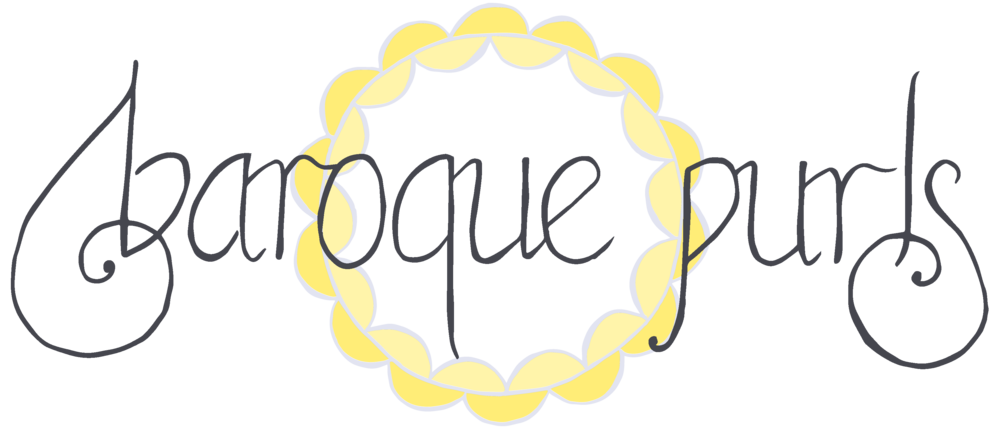You may have noticed my blog looks a little different than it used to - and you'd be right! I've been working on refreshing the 'look' of my knitting design business, to match my current taste and design style a bit better. I do hope you like it. :)
I went through quite a lengthy process of collecting images to use as inspiration, and reading up on typography + logo design + branding in general. Yes, it would all have been much faster if I'd hired a pro to sort it out for me, but I was curious to learn about these areas, and I'm a bit of a control freak when it comes to design, especially for an important project like this.

My 'inspiration board'
I wanted a light, bright, beautiful feel, with a handmade, playful side to it. I also really wanted to keep yellow in the mix, since that colour means happiness to me. My 'inspiration board' features swirling shapes, yellows and golds, details from Klimt paintings, music in the form of a violin scroll, and nature in the form of trees, flowers, and bees.
I love any excuse to get out our art supplies, and I had a lot of fun drawing and tweaking my new logo. Because I'm a massive nerd, the starting point for my hand-lettering style was an 18th-century title page for a book of keyboard music by J.S. Bach:

Here's the the finished lettering for my logo, together with a circle of purl stitches in light, warm yellows:

Did you know the Baroque period in music (when my faves Bach and Handel and Monteverdi were composing) gets its name from 'baroque' shaped pearls? This type of pearl is irregular and bumpy, and the analogy to music was originally meant as an insult, much like 'Impressionism' in painting. My yellow circle of purls is my attempt at a pun - it's a baroque pearl made of purls.
I also sketched a loose, flowy texture based on the structure of plain stockinette or garter stitch, which I'll use as a background or wherever it's needed. I made a little stop-motion video of myself inking over the pencil sketch, just for fun...


(Click to play gif!)
I'm hoping these elements, along with my new colour palette and selection of fonts, will be versatile enough for all of my blog, social media, newsletter, and pattern layout needs. I'll be updating all of these over the next while! And most exciting of all, I'm going to be working on a new website to house a pattern gallery, with tutorials and everything else all in one place.
In case you're curious, this book is one of the main resources I used for this whole process. It's been fun, but I admit I'm impatient to get back to focusing on designing!

























